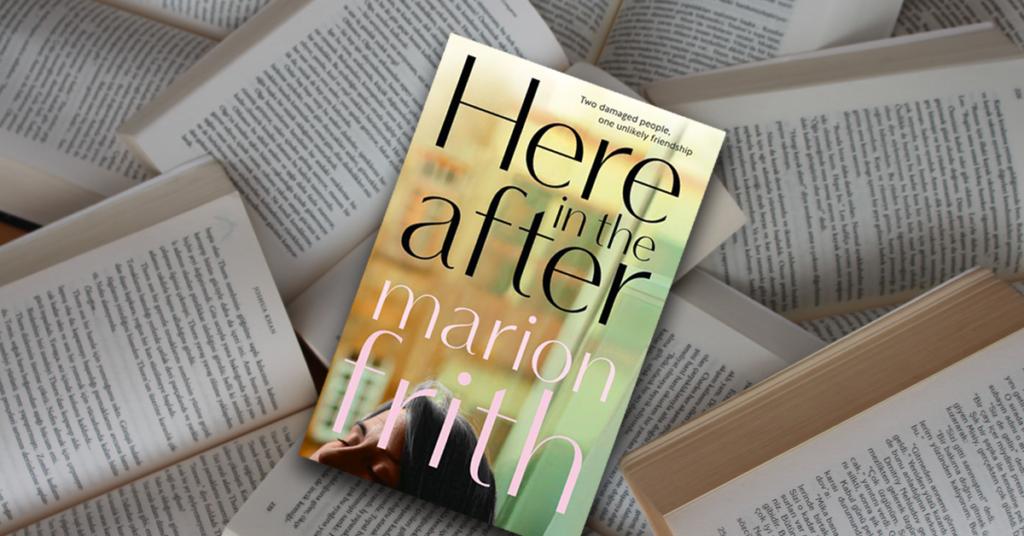Marion Frith on finishing her first novel

The day after I sent off my final proofread of my novel Here in the After, I was waiting in a hospital emergency department with a friend, fretting about it, when a young man in front of me caught my eye. There was something about him that was familiar … the way he held himself ram-rod straight, his facial stubble, his clothes. I leaned in to steal a closer look and he turned and smiled. Now, there is no way to say what happened next … except to say it. That man was my character Nat; exactly as I had pictured him, real and alive. And when the woman beside him turned … it was his wife. Just as I had conjured her; her face crafted by my own imagination.
Such a fantastical, unlikely encounter didn’t deserve to be rationalised and I let it stand at face value, unquestioned; a strangely liberating and welcome full stop at the end of the writing journey. Whatever it was, its message was clear; my characters were okay and here they were, out in the world, living their own lives and taking care of themselves. Separate to me. Until that moment, my relationship with them had been intense and highly protective, especially of Anna, the sole survivor of a Sydney terrorist attack, and of Nat, an Australian Army veteran who served in Afghanistan. They needed me to exist and grow, and as I wrapped myself around them our lives had become interwoven.
All writers do that, I suppose; embed with their characters and cocoon them until they are ready to stand alone, but when your characters must suffer to fulfil their story-arc, the separating and unwinding from them is particularly bittersweet.
Anna and Nat both have PTSD. With the book’s release, they step out from my guiding hand into a world where trauma like theirs is writ large: the news cycle awash with terrible images of anguish … of people facing the worst that humanity and nature can unleash, raising their faces to pain’s storm. How does anyone reassimilate into a world that has twisted and curled around them? How does the light ever shine again?
To fictionalise trauma is to take a leap across a divide; to tear your heart open to the hurt. To sit in the rubble of destruction. But equally it is to soar on the spirit of survival. And that is the core of my story, hope’s red blood cells rushing to seal deep and ugly wounds.
As a writer and a reader, I’ve never been scared of exploring trauma. Yes, of course, I’m scared of actual physical pain, suffering and fear, but not of emotion that runs deep and choppy. I’ll read something light and never think of it again; something tough and I will hold it in my mind to taste and savour for a long time after. We learn and grow by facing big emotions head-on, riding them out like a wave.
Writing Here in the After took me to some dark places … but ultimately that wave of complex emotion washed me up onto the shores of empathy and understanding, from where the view of the human experience is always, only ever, backlit by the sun.
Seeing Nat in the hospital that day was the most beautiful thing that could have happened. I came straight home and swept the printed-out drafts and dusty word crumbs from my desk. Wiped away the coffee-mug rings. Job done. I’d finally finished my first novel.
Two damaged people, one unlikely friendship and a way to find hope in the darkness.
Anna has survived the worst. So has Nat. Two broken souls, struggling to find a place in a world they no longer fit.
Anna, 62, is the victim of a terrorist attack in which eleven others were murdered. Nat, 35, is an Army veteran who fought in Afghanistan. They have so little in common. And so much.
A friendship stirs between them, tentative and unlikely, its foundation the violence they have seen and the memories that stalk them. Together, they begin to search for a way back home.
But when Nat’s wife falls unexpectedly pregnant, terrible ghosts from his wartime past rise up and much more than a friendship is at stake.
Here in the After is a poignant and uplifting exploration of the legacy of trauma and the healing power of connection.


